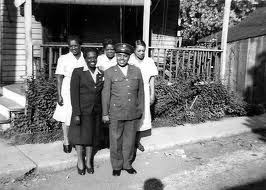Photo Choices in Your Family History Book
Biff Barnes
Have you ever watched a person look through a book they’ve picked up for the first time? If it has pictures, you can bet that’s where they’ll stop to take a look. That’s great news for family historians who have photographs to use in creating an illustrated book. Good pictures will make the book much more visually attractive, especially for younger readers who are growing up in a digital age.
To gain maximum advantage from your photos there are some important choices to make:
- Which photos will be featured? After reviewing your photos decide on 10-15 you think are excellent. The two best can be used on the front and back covers. Others can be displayed throughout the book as full pages (or significantly enlarged if the original is too small).

- If you don’t have many photos to use in illustrating your book, there is an alternative. Scanned family documents or photos of the time and place where ancestors lived, which can often be found by consulting local libraries, historical or genealogical societies, can give a sense of the lives your ancestors lived.

- There are a number of considerations in placing photographs. When possible, locate photos to accompany the text describing people or events in the picture. It is often wise to group photos of the same branch of the family tree to accompany their stories. However, not every image is, or must be so literally connected to your stories. To include more loosely related photos, you can group them together or place them between chapters. You can place up to a dozen photos on a page, but you may want to limit groupings to two to four photos so that they are bigger for better visual effect. We don’t recommend photo collages because they are often difficult for the reader to comprehend.
- Consider whether the image needs identification (who, what, when, where, why, how). Not every photo needs a caption, and documents often speak for themselves. Consider grouping pictures without captions in some sections of your book. Self explanatory photos, such as multiple images of the same person, are better off without a caption.
- Graphics like timelines and charts often benefit from effective use of photos. For example adding wedding pictures and fiftieth anniversary photos to a timeline can bring it to life. Thumbnail photos of heads of different branches of the family will bring a family group sheet will make it more interesting.